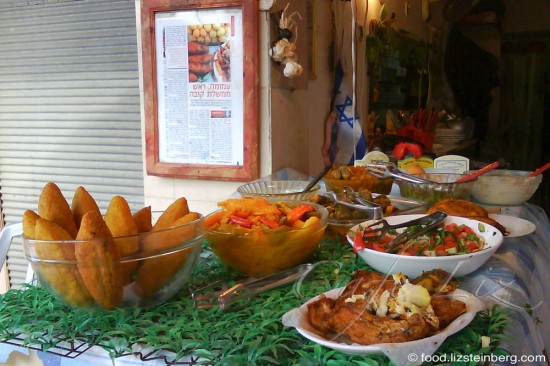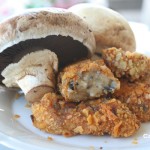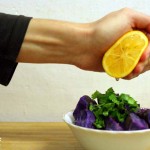Kubbeh got a brief blast of attention when a pop-up kubbeh restaurant briefly appeared in New York City last month. Reading about it from afar, I was pleased that kubbeh was getting some much-deserved focus — kubbeh is quite popular in Israel, but nearly entirely unknown in the United States. That said, I was dismayed by the lack of information — as well as the disinformation — that characterized the articles reporting on the matter.
After all, kubbeh is serious business for some people.
Here’s the main fallacy that appeared in the news articles: This food you never knew existed is rapidly disappearing.
The project named itself “After Hours Kubbeh Project @ Zucker Bakery: A Modern Attempt to Preserve Endangered Foods,” and it seems like nearly everyone reporting on it swallowed that line without a modicum of criticism (see WNYC). So maybe I’m being overly sensitive, but isn’t this a bit condescending? What were all these editors thinking? Gee, I don’t know much about this food, but clearly it’s not due to my own lack of knowledge — it’s because this food is on the verge of extinction.
Maybe there are fewer people in Israel making kubbeh than before, but that’s reflective of changing cooking trends in general — more people are buying more of their food ready-made, while others cook because it’s their hobby. And there’s still plenty of kubbeh to be found particularly in restaurants — a lovely new kubbeh restaurant opened up just outside my office a month ago. And we haven’t even begun to discuss the other countries such as Iraq, Lebanon and Syria where people traditionally make kubbeh. The art of kubbeh making is hardly being lost.
But let’s back up a bit, for those of you who aren’t familiar with kubbeh in the first place. In Israel, kubbeh refers to a wide range of stuffed dumplings, generally made from a starchy shell and a ground meat filling (there are Lebanese kubbeh/kibbeh dishes that do not fit this model, but I digress). Here the dish is traditionally made by Jews of Iraqi and Kurdish descent, as well as by Syrians (both Jewish and non-Jewish, such as the Druze community in the Golan Heights) and Arab-Israelis/Palestinians. Am I leaving out some kubbeh makers? I may well be, and I apologize.
From there, the dumplings take all shapes and sizes — there are deep-fried kubbeh with a semolina shell and cinnamon-spiced ground beef inside; there are fat kubbeh the size of your hand with a shell of rice or potato; and there are all sorts of soup kubbeh, semolina dumplings boiled in traditional broths such as beet, tomato-okra or a tangy, herbal broth known as hamousta. (The New York Times called it “palate-challenging.” Humph.)
It seems like many people have been long expecting kubbeh to meet an untimely demise. The Kubbeh Project states, “Today, with assimilation and massive cultural changes, many recipes that require intensive time and labor, may soon be lost,” an echo of a statement by Claudia Roden in her 1996 cookbook “The Book of Jewish Food” — “When the last generation who makes Kubbeh has disappeared â€(I expect these dishes will not be carried on, because they take too longâ€), I hope Jerusalem keeps up her reputation as the capital, and that some food producer will decide to make them commercially, so that a whole little world of our culinary culture does not disappear.”
Was Roden a prophet? In Israel, these kinds of traditional foods have never been more popular, and kubbeh is rapidly entering the mainstream. Restaurants serving kubbeh soups are flourishing (check out Mordoch (info in Hebrew/English) or Ima (Hebrew/English) in Jerusalem; or Kubbeh Bar, Tzarum and practically the entire Hatikva neighborhood in Tel Aviv), while the deep-fried and pan-fried kubbeh make great street food, sold at holes in the walls in various markets as well as at the occasional falafel shop.
As for the kubbeh pop-up restaurant in New York, from what I can tell they’re not exactly preserving traditions — rather, they’re a chef’s interpretation of traditional recipes (so says Haaretz, while the Huffington Post reports that there’s coconut in the beet kubbeh and the pumpkin kubbeh is actually a pureed soup with sage — interesting variations but far from traditional).
A food so basic and popular that it’s being reinterpreted by a chef? Kubbeh isn’t on the verge of being lost — no, kubbeh has arrived, and is here to stay.
And now that we’re done with that: The biggest hurdle facing vegetarians who wish to indulge in kubbeh is that they’re generally stuffed with meat — this certainly applies to traditional homemade kubbeh, and it applies to most of the restaurant kubbeh as well. (Of the places listed above, Ima makes some vegetarian kubbeh, but that’s it.)
Aside from all the places above, one of my favorite places to get kubbeh is from Amuma (info in Hebrew), a gruff woman who sits outside her little shop on an alley between the central Carmel Market strip and the stinky meat market. She makes several types of kubbeh, all of them so large that one is a meal. They sit unceremoniously in glass bowls — rice kubbeh, potato kubbeh and massive torpedo-like bulgur kubbeh for the incredible price of 5 shekels apiece (check them out in the photo above). One storefront down is another, equally gruff woman selling her own kubbeh. Maybe it’s me, but after buying a kubbeh from one, I feel the piercing stare of the other boring into my back.
Sadly, I haven’t seen Amuma around in a while. Either way, I made these potato kubbeh in an attempt to echo the flavor and experience of her potato kubbeh — ground beef spiced with the warm flavors of cinnamon and nutmeg, encased in a cloud of turmeric-yellow potato with a lightly crisp pan-fried exterior. My version uses mushrooms instead of beef, and adds some pine nuts and parsley to the filling. I think it’s a pretty decent imitation.
Note: This can easily be made vegan by omitting the egg.
For about 12 kubbeh (the quantity varies, depending how large you make them):
For the filling:
1 onion
2 tablespoons oil
2 tablespoons pine nuts
500 grams mushrooms
1/2 teaspoon salt
1/2 teaspoon black pepper
1/2 teaspoon cinnamon
1/4 teaspoon nutmeg
1/8 teaspoon cloves
2 tablespoons chopped parsley
For the shell:
1 kilo potatoes
1/2 teaspoon salt
1/2 teaspoon turmeric
1/2 teaspoon pepper
For assembly:
1-2 eggs
oil for pan frying
Finely chop the onion, and put in a frying pan with the oil on a medium flame. Chop the pine nuts, and add to the pan. Let fry so that the onion gets translucent and the pine nuts brown slightly.
In the meanwhile, use a food processor to finely chop the mushrooms. You want small pieces that approximate ground meat, but you don’t want to create a paste. Add the mushrooms and the spices to the frying pan and let fry, stirring occasionally. The mushrooms will release a lot of water. The filling is done once the water has evaporated and the mushrooms are cooked (they’ll be a darker brown than when they started). Add the chopped parsley last.
To make the shell: Chop the potatoes into large chunks, put in a pot, cover with water (pre-boiled water makes this go quicker) and bring to a boil. Let cook until the potatoes are cooked, meaning that they can be pierced easily with a fork.
Drain off the water, add the spices to the potatoes and use a potato masher to mash them by hand. DO NOT BE TEMPTED TO USE THE BLENDER — you will get useless goopy puree. (Trust me, I know.) The potatoes should still have some ricey texture to them once mashed.
To assemble the kubbeh: Crack an egg into a bowl, and beat. Put some oil in a pan and heat on a medium flame.
Wet your hands and take a handful of potato around the size of a large golfball. Flatten into a disc in your palm, and top with an equal quantity of mushroom filling (to start, you can use less filling; it’ll be easier, but the best kubbeh have an equal shell-filling ratio). Fold the potato up around the mushroom, and place a bit more potato on top to seal. Use bits of potato to patch up any holes, and then flatten slightly into a fat disc.
Dip both sides of the kubbeh into the egg, let any extra egg drain off, and then place the kubbeh into the pan on the flame. Let the kubbeh fry until golden on the bottom, and then flip to fry the second side. Then transfer to a paper towel-lined plate to absorb any excess oil.
Repeat with the rest of the ingredients.
Want to read lots more about kubbeh?
Among the local English-Israeli bloggers, Sarah is our resident kubbeh expert. Her blog is the ultimate kubbeh resource. Here are some of her posts:







